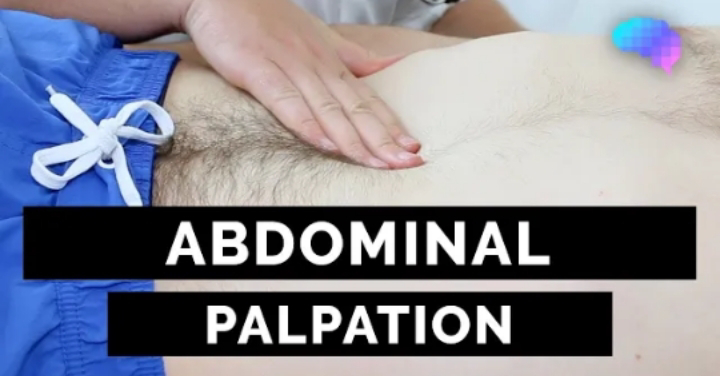How to Perform an Abdominal Assessment: Auscultation & Palpation
Hi, I’m Maris, and in this video, I’ll walk you through the correct technique for performing an abdominal assessment, including how to auscultate and palpate the abdomen properly. This is a critical skill in nursing and healthcare because abnormal findings can indicate serious conditions, from intestinal obstructions to peritonitis.
I’ll be following along with our Health Assessment Flashcards, which you can find on our website, leveluprn.com. If you prefer a digital version, check out Flashable, the interactive, online format of all our flashcards.
Why the Abdominal Assessment Follows a Different Order
Unlike most physical assessments, the abdominal exam follows a specific order to prevent altering bowel sounds before auscultation. The correct sequence is:
- Inspection – Visually assessing the abdomen
- Auscultation – Listening for bowel sounds and vascular sounds
- Percussion – Evaluating gas patterns and organ size
- Palpation – Feeling for abnormalities like tenderness, masses, or guarding
This order matters because palpating or percussing first can artificially stimulate peristalsis, leading to false interpretations of bowel sounds. For example, if a patient actually has absent bowel sounds, pressing on the abdomen might create misleading sounds, making it seem like their bowel function is normal when it's not.
Step 1: Inspection – What to Look For
Before touching the patient, take a moment to observe the abdomen for:
- Contour: Is it flat, scaphoid (sunken), rounded, or distended?
- Symmetry: Any visible bulges or masses?
- Skin Changes: Look for surgical scars, striae, discoloration, or dilated veins, which may indicate cirrhosis or portal hypertension.
- Pulsations or Visible Peristalsis:
- A strong abdominal aortic pulsation could suggest an abdominal aortic aneurysm (AAA).
- Visible peristalsis in a thin patient may be normal, but in an ill patient, it may indicate an intestinal obstruction.
Step 2: Auscultation – Listening for Bowel Sounds
Use the diaphragm of the stethoscope to listen for bowel sounds before touching the abdomen. These sounds are created by peristalsis, the movement of air and fluid through the intestines.
The Four Quadrants to Auscultate (Following the Colon’s Pathway)
- Right lower quadrant (RLQ) – Start here; this is where the small intestine empties into the cecum, and bowel activity is usually most active.
- Right upper quadrant (RUQ) – Corresponds to the ascending colon.
- Left upper quadrant (LUQ) – Corresponds to the transverse colon.
- Left lower quadrant (LLQ) – Includes the descending and sigmoid colon.
Why this order?
- If bowel sounds are present in the RLQ, they are likely present throughout.
- If absent in the RLQ, they may be absent in all quadrants, indicating a potential paralytic ileus or bowel obstruction.
Types of Bowel Sounds
- Normal: Soft, gurgling sounds occurring 5–30 times per minute.
- Hyperactive (e.g., borborygmi): Loud, frequent sounds often linked to diarrhea, early bowel obstruction, or gastroenteritis.
- Hypoactive: Faint, slow sounds (<5 per minute), which may indicate constipation, peritonitis, or post-operative ileus.
- Absent: No sounds after 5 full minutes of listening in each quadrant—this is a medical emergency suggesting complete bowel obstruction or paralytic ileus.
Listening for Bruits (Abnormal Vascular Sounds)
Use the bell of the stethoscope to check for bruits (whooshing sounds caused by turbulent blood flow) over:
- The aorta (midline, above the umbilicus) – A bruit may suggest an abdominal aortic aneurysm (AAA).
- The renal arteries (bilaterally, above the umbilicus) – A bruit may indicate renal artery stenosis.
- The iliac & femoral arteries – Abnormal sounds could suggest peripheral vascular disease.
Step 3: Percussion – Checking for Gas, Fluid, and Organ Size
Percussion helps determine:
- Gas patterns – Tympany (hollow sound) should dominate because the intestines are gas-filled.
- Fluid accumulation (Ascites) – A dull sound in the flanks may indicate ascites, often caused by liver disease or heart failure.
- Liver size – The liver should span 6–12 cm in the midclavicular line. If it’s enlarged, consider hepatitis, cirrhosis, or heart failure.
Step 4: Palpation – Identifying Tenderness & Masses
Technique: Move in a Clockwise Pattern
- Start in the right lower quadrant (RLQ).
- Move through RUQ → LUQ → LLQ.
- Use light palpation first (about 1 cm deep), then deep palpation (up to 5 cm deep).
What to Look for During Palpation
- Tenderness – May indicate infection, inflammation, or peritonitis.
- Rebound tenderness – Pain upon release of pressure, often seen in appendicitis (McBurney’s point tenderness).
- Masses – Assess for location, size, mobility, and texture.
- Guarding – There are two types:
- Voluntary guarding – Patient consciously tenses up due to fear of pain.
- Involuntary (muscle) guarding – Abdomen involuntarily stiffens, often a sign of peritoneal irritation (e.g., peritonitis, appendicitis, or pancreatitis).
Palpating a Patient with Abdominal Pain
If the patient has pain, palpate the tender area LAST to:
- Prevent unnecessary discomfort.
- Avoid reflexive guarding that might distort findings.
Quick Quiz! Test Your Knowledge
-
Which quadrant should be auscultated first?
- Answer: Right lower quadrant (RLQ)
-
How should a nurse palpate the abdomen of a patient with abdominal pain?
- Answer: By palpating tender areas last.
-
What does rebound tenderness suggest?
- Answer: Peritoneal inflammation, possibly due to appendicitis or peritonitis.
Final Thoughts
How many quiz questions did you get right? Let me know in the comments! If you have a great memory trick for remembering these steps, share it below—it could help others.
If you found this video helpful, hit the like button, subscribe to our channel, and share it with your classmates. Thanks for watching, and happy studying!




Comments
Post a Comment